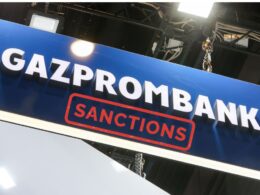Analysts from the Ukrainian OSINT agency Molfar conducted a detailed investigation revealing potential espionage activities by the Russian Orthodox Church (ROC) in Europe. The study analyzes connections between ROC representatives and Russian intelligence services, as well as the strategic locations of churches near critical infrastructure in eleven European countries. The first part of the study focuses on five of them—Sweden, Norway, Finland, the Netherlands, the Czech Republic, and Germany.

Molfar is an OSINT agency uniting 80 professionals specializing in open-source intelligence, financial and military analysis, information searches, analytics, and fact-checking. Initially focused on background checks, corporate intelligence, and market research, the agency has significantly expanded its activities in the context of the full-scale war in Ukraine.
Below is a summary of the investigation: “Is the Russian Orthodox Church Spying in Europe? Molfar’s Research, Part One.”
You can access the full report [here].
What has long been apparent to the Ukrainian public about the Russian Orthodox Church (ROC) is now becoming evident to European authorities as well. The ROC is not just a tool of soft power but operates as a legitimate espionage network.
Sweden
In the Swedish city of Västerås, a Russian church was built near strategic facilities. Construction began in 2013, and the church was consecrated on November 4, 2023. The ceremony was attended by Vladimir Lyapin, a counselor at the Russian embassy in Sweden, who is suspected of espionage for Russian intelligence services.
The land for the church was purchased and funded by the Russian state corporation Rosatom. The church is located 4.22 km from the Westinghouse Electric plant, which produces nuclear fuel, 500 m from Västerås airport, 6 km from Mälarenergi AB headquarters, and less than 5 km from the ABB Metallurgy plant.
The church’s pastor, Father Pavel Makarenko, received an award from the Russian Foreign Intelligence Service. He was also the director of the Swedish company NC Nordic Control AB, owned by Russian developer Pavel Gerasimov, who has been implicated in drug trafficking and numerous church projects in Sweden.
Norway
In the city of Bryne, the Church of St. Irina was built in 2014. The pastor, Archpriest Vasily Petrov, is also the vice-rector of Kaluga Theological Seminary. In 2022, he signed a statement supporting the actions of the Russian army in Ukraine. The church is located near businesses like Nordic Steel AS, Robotic Innovation AS, IXYS AS, Jæren Overflatebehandling AS, and Aarbakke AS, which specialize in steel structures, automation, semiconductors, and energy.
In Kirkenes, the Church of St. Tryphon Pechenga is located near the municipality, Swedish consulate, and port. In the 2000s, there were plans to build a seafarers’ chapel, but the project was never realized. The ROC also owns property a few kilometers from the Russian border. The area is known for strong ties with Russians living on the Norwegian side.
In Vardø, a ROC chapel was built in 2017. Its funding sources are unknown, but it was supported by the Norwegian Barents Secretariat, which issued grants for cooperation between Russia and Norway. Near the chapel is the GLOBUS radar system, operated by the Norwegian Intelligence Service to monitor the Arctic. The ROC planned to build a prayer house nearby, but the project was canceled.
In Trondheim, the Church of St. Anna of Novgorod, built in 2008, is led by Father Alexander Volokhan. No information about the church’s funding is available.
Finland
In the city of Turku, the Church of the Dormition of the Blessed Virgin Mary operated from 2002 until its closure by local authorities in August 2022 due to Russia’s invasion of Ukraine. The church was located near the Coastal Fleet, the Pansio base, Turku port, the city hall, the Southwest Finland Regional Administration, and the Russian consulate.
After the church’s closure, Father Nikita (Oleg Dobronravov), who is close to Metropolitan Kirill, became the pastor of St. Sergius Parish in Stockholm. Closures of suspicious churches are rare.
In Helsinki, the Church of the Protection of the Blessed Virgin Mary, built in 1953, and the Chapel of St. Xenia of St. Petersburg, built in 2000, remain active. These are located near strategic sites, including Vuosaari Port, the Jordanian Consulate, and the Nordsjö power plant.
The Netherlands
In The Hague, the Monastery of St. John the Forerunner, built in 1972, was closed in December 2022. It was located near 29 government facilities, the Federation of European Defense Technology Associations (407 m), a military facility (2041 m), a harbor (3529 m), and the Uniper City power plant (1883 m).
In Rotterdam, the Church of St. Alexander Nevsky, built in 2004 by the Baltic Construction Company, is led by Father Anatoly Babyuk. He has refrained from commenting on the Ukraine war. The church is located near nine government facilities, including the Rotterdam Prosecutor’s Office (1142 m).
Czech Republic
In Prague, the Russian company Gazprom Neft partially funded the frescoes of the Cathedral of Sts. Cyril and Methodius, which belongs to the Orthodox Church of the Czech Lands and Slovakia. Archbishop Christopher awarded Dmitry Malyshev, an advisor at Gazprom Neft, for supporting the church.
In Olomouc, the Cathedral of St. Gorazd of Ohrid has been active since 1939. Seventy kilometers away, a munitions depot in Vrbětice was targeted by Russian GRU agents in 2014, causing explosions that killed two people. The cleanup of the aftermath was completed in 2020. The Czech Republic charged six GRU officers, including General Andrey Averyanov, Alexander Mishkin, and Anatoly Chepiga.
72 km from the depot is the Chapel of the Holy Trinity in Čelechovice na Hané.
The Russian Orthodox Church (ROC), known for its close ties to Russian intelligence services, continues to construct churches near strategic facilities, government institutions, and military bases across various European countries. This appears to be a systematic and deliberate effort. Once again, Russians are using a religious front to gather intelligence, posing a serious threat to European security that is being largely ignored.
This is not merely an espionage issue; it demonstrates how Russian state structures, using the ROC as a tool, aim to approach critical sites in Western countries. This situation demands a serious response, heightened monitoring of such “religious sites,” and international coordination. Europe must recognize that under the guise of religion, Russia may be concealing hostile intelligence operations.








